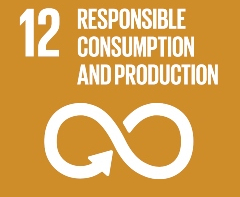.jpg)
Setting the standard for cleaner skies
Whether for business, leisure or goods transport, we rely on air travel more than ever, but large aircraft leave a footprint on our environment. Research at Manchester has helped to set the standard for today’s aviation industry so that we can keep our skies cleaner.
This work delivers on the UN Sustainable Development Goal 12: ensure sustainable consumption and production patterns.
Key facts
- Enabled two new international standards for soot emission measurement
- Contributed to an aircraft emission regulatory update, affecting air quality around the world
- Working towards a reduction in global aviation soot in new aircraft engines
Poor air quality is dangerous for everyone – and the planes flying daily above our heads are part of the problem.
Large aircraft engines, just like our cars, are regulated on their emissions. Non-volatile particulate matter (nvPM) is the metric used for aircraft emissions regulation. The nvPM is the solid, sooty particles which don’t easily evaporate at normal temperatures, and adversely affect air quality.
Previously, emissions regulations were based on a metric called 'smoke number', which was a measure of visibility. Newer aircraft produce less visible smoke so this measurement became inadequate. But to develop new international emissions standards for engines, there was a need to first develop a standardised method of sampling and measurement for emissions certification tests.
Informing new regulatory standards
Work undertaken by Dr Paul Ivor Williams from the University’s School of Natural Sciences and the National Centre for Atmospheric Science formed an integral part of informing new regulatory standards on emissions of nvPM.
This research is a result of a large international effort that will reduce aviation pollution and improve local air quality. It has been a major achievement for global collaboration and agreement, something that is at the very heart of the SDGs.
Dr Paul Ivor Williams / Senior Research Fellow, School of Natural Sciences
The research has enabled two new international standards for nvPM emissions measurement; subsequent technical contribution and drafting of International Civil Aviation Organisation (ICAO) regulatory documents; and the introduction of nvPM mass and number concentration emission limits for new aircraft engines, aiming to reduce global aviation soot.
As a result, all large engine manufacturers must now use these to report their nvPM emissions to ICAO for certification.
Determining the limits of nvPM
The research provided key aerosol measurements, quantified the number and size data, and evaluated aerosol losses and uncertainty in the nvPM measurement systems. These measurement systems were then used to measure the emissions from existing engines, allowing ICAO to set current and future nvPM number and mass limits.
These standards were identified as necessary by the ICAO for aircraft engines above 26.7 kN of thrust – effectively the entire global commercial, non propeller air fleet.
With the new standard, ICAO completed all main environmental standards for the certification of aircraft and engines, including for noise, local air quality and climate change.
Producing the standards
Funded by the European Aviation Safety Agency, this research informed the standards by identifying:
- suitable measurement technologies and sampling protocols;
- validating proposed methodologies and the development of software and procedures for correcting data;
- measuring real engine emissions using new methodology and data handling procedures;
- determining uncertainties in the sampling framework.
Podcast: Setting the standard for cleaner skies
-500x298-edited-160421.jpg)
In this podcast, The University of Manchester’s Dr Nic Gowland interviews some of our leading experts about how their research is helping to deliver the UN Sustainable Development Goals for global health, equality and sustainability.
Download the Setting the standard for clearer skies podcast transcript (PDF, 785KB).


